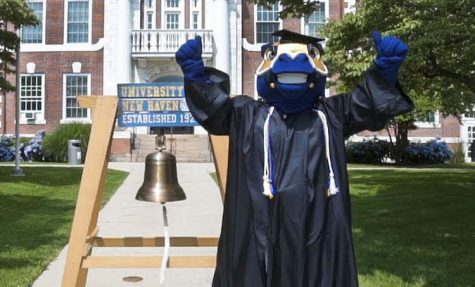What Happens With Course Evaluations?
At the end of each semester, students are asked by the university to fill out course evaluations for the classes they took, and to reflect on their instructors. Many students, however, do not know how those evaluations are used by the university.
Associate provost of the College of Arts and Sciences, Stuart Sidle, says that student course evaluations are a vital part of the way courses are updated and improved upon. About every three years, there is a faculty committee that comes together and selects the different questions that appear on the course evaluation forms. The questions can come from faculty proposals or the use of question banks that other universities create.
From there, once students fill them out and the semester ends, professors do not see their course evaluations until after their grades are in. They then see a summary of the evaluations, where student names stay anonymous through a system of alphabetic listing, to prevent professors from knowing which student wrote which comment. There is a summary of their scores and averages for each item, and the comments are shown word-for-word to the instructor.
“We learn from feedback,” said Sidle. “If you want your school to be better, your university to be better, by doing [course evaluations] you’re contributing to making it a better institution.”
According to Sidle, the university’s response rate has improved since the implementation of online course evaluations in 2014, with the average rate being about 80 percent of the entire university student population.
If an instructor consistently gets poor evaluations and resists changing their teaching methods or the course with the help of the department chairs and deans, it can impact whether or not they get asked back to the university, amongst other things. Faculty members have to complete annual performance reviews in which they reflect on their scores and pose ways that they can improve the courses that they teach.
“Overall at this university, we’re a teaching-oriented university,” said Sidle. “So we have a low tolerance for instructors who don’t care about teaching.”
One of the main points that the university makes on their website is that the faculty is “committed to your success and to helping you achieve more than you ever thought possible.”
In terms of the difference between university course evaluations and websites like RateMyProfessors.com, the student evaluations, though they aren’t public data, are used to improve the course behind the scenes. Third party websites are often used as a resource for students to understand what a professor is like, but the university is able to control their course evaluations and know that actual students are the ones responding to them.
“I would hope that course evaluations have a little more of that personal touch, where students are actually caring about their community, and about the people they are working with, and say ‘I want to help this person, I want my program to be better’,” said Sidle.
The idea of making the course evaluation public data is not such a stretch. Some faculty oppose the idea of having that data revealed, but others think it would prove to be valuable to the students. Sidle’s biggest concern with doing this, however, is that faculty could feel a sense of competition and be more reluctant to embrace the feedback and learn from it.
Sidle continuously encourages students to fill out their course evaluations, and not just for the early grade view incentive.
“[Course Evaluations] gives you an opportunity to reflect on the experience, how did you contribute to learning in the class, and how much effort did you put in,” he said.

Victoria Cagley is a communication major with a concentrations in digital media and public relations in her fourth year at the university. She is beyond...










